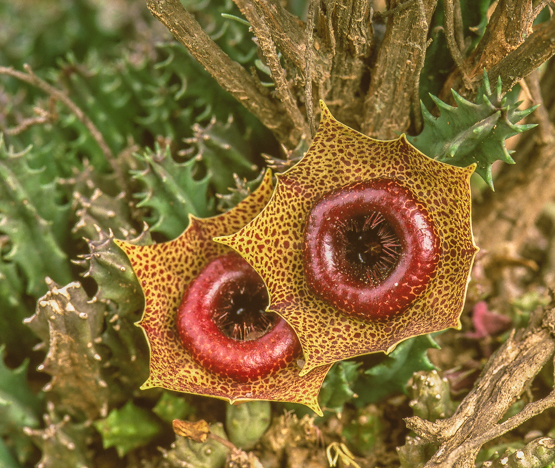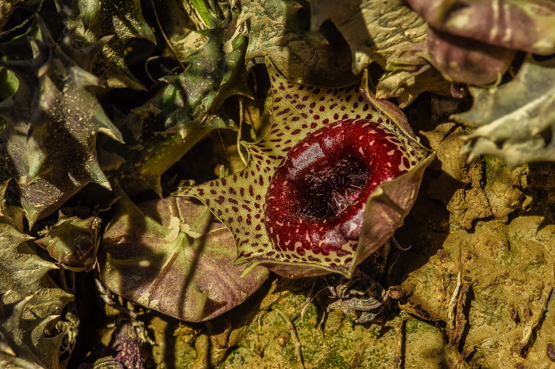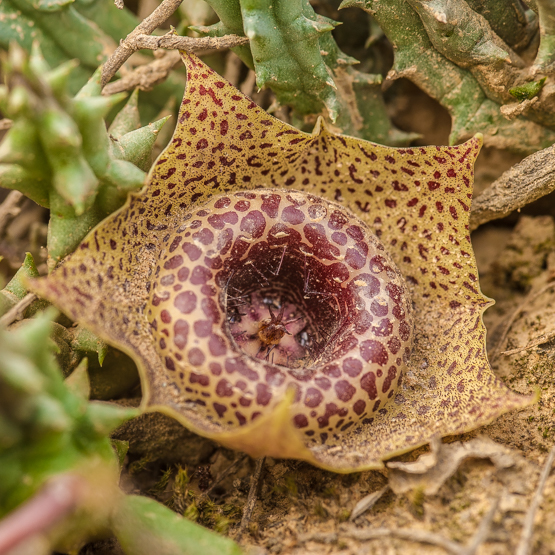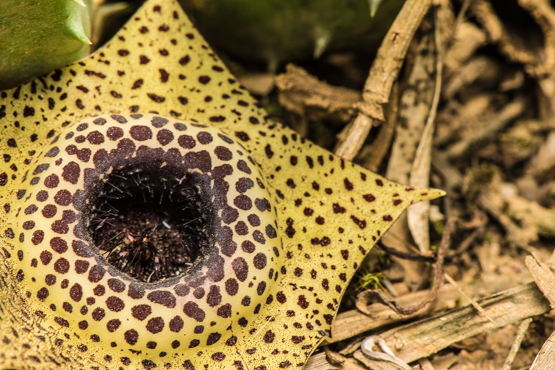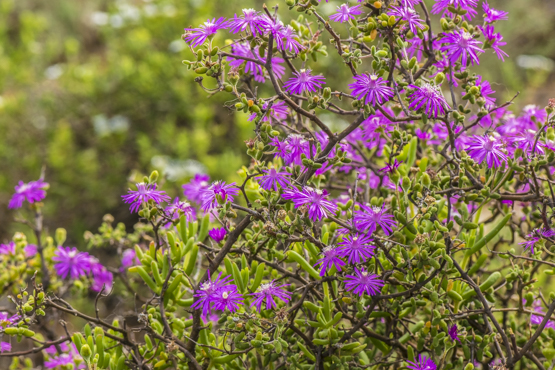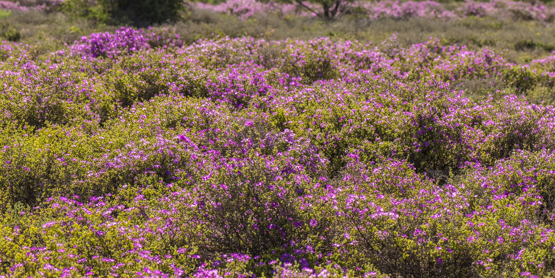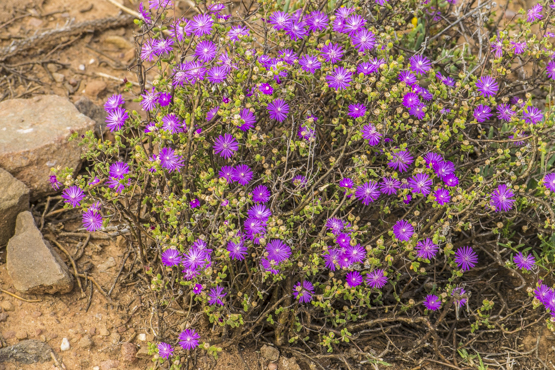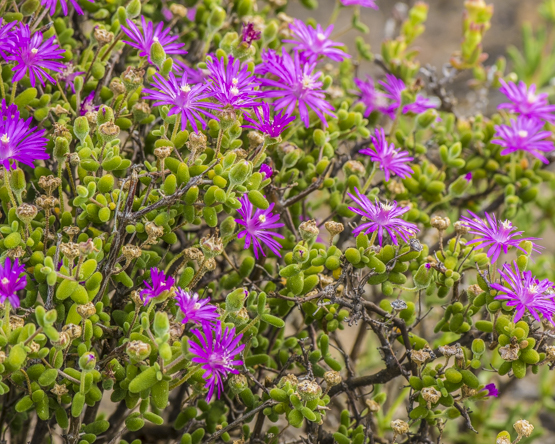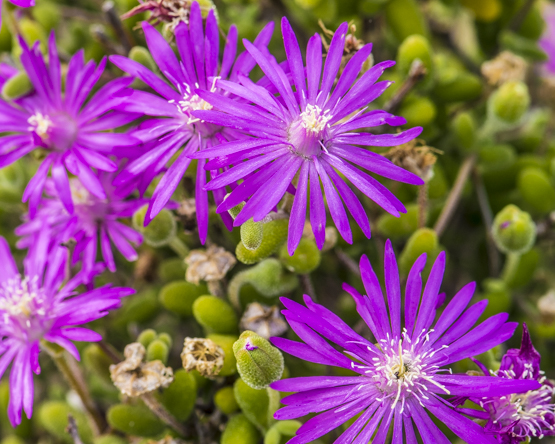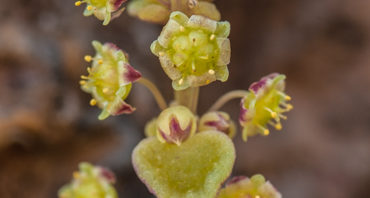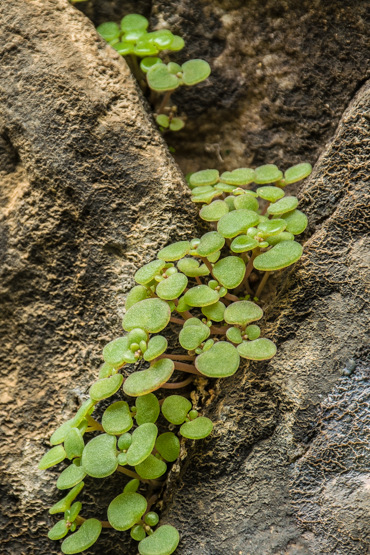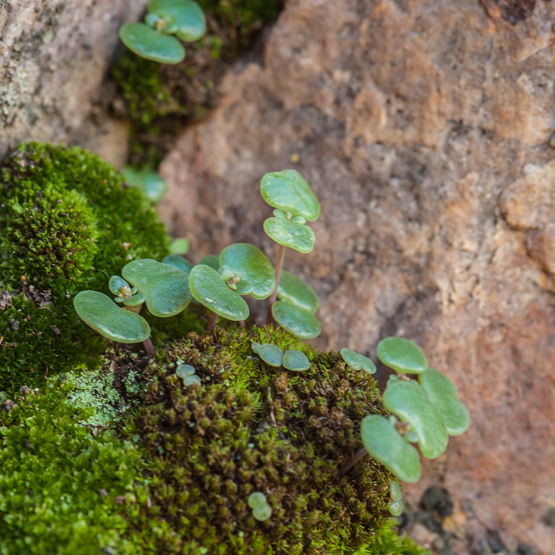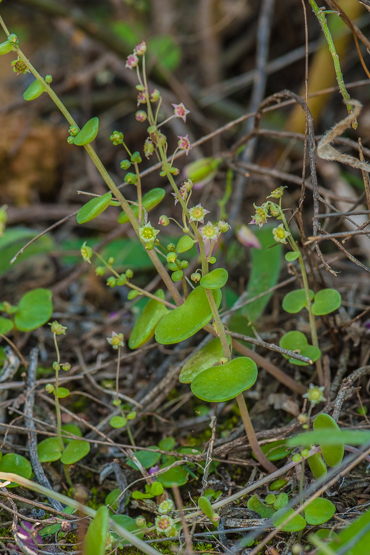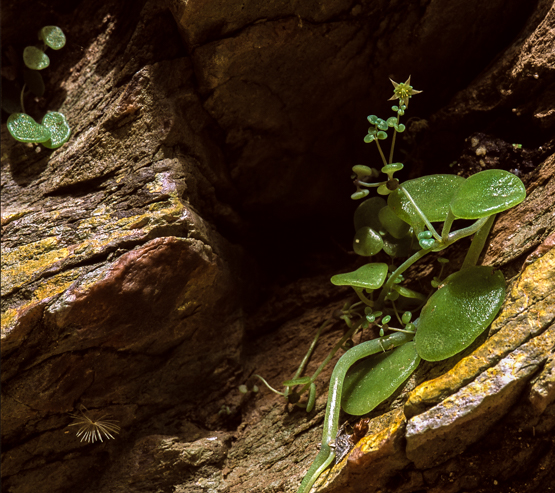In this subspecies the stems have 4 or 5 angles; they are 2 to 10 cm long and 1-1.5 cm thick, grey-green, sometimes with faint purple-red spots.
The striking flowers are 2-7.5 cm in diameter and appear in November-April.
Plants are found from Somerset East to near Willowmore, between Uniondale and Joubertina and also between Oudtshoorn and Calitzdorp, under bushes on stony slopes.
The pictures shown here were all taken in the latter area and represent the former subsp. calitzdorpensis (the plant in the third picture was growing next to the road, hence the specks of dust).
